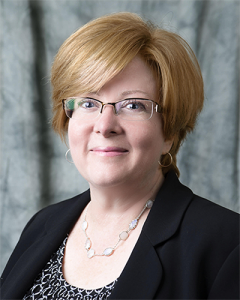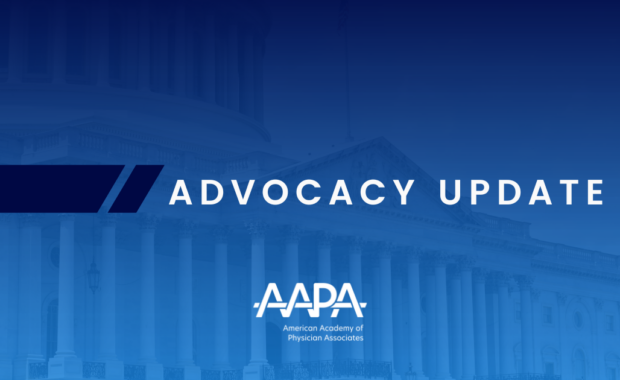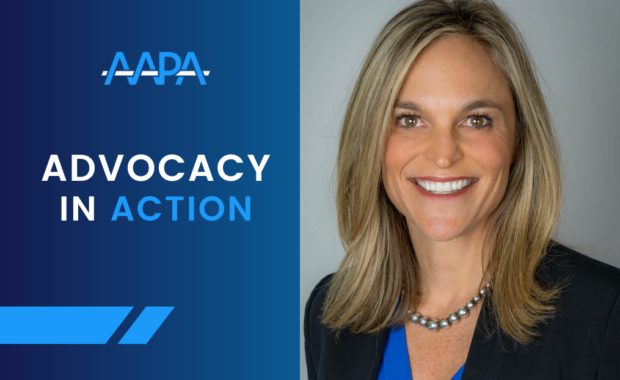PA Answers 6 Questions about Healthcare Provider Stigma
Help Shut Down Stigma Against SUD
February 5, 2021
By Annette Bettridge, MS, PA-C, FNP
People with substance use disorder (SUD) face stigma on many fronts – from themselves, their loved ones, and even their medical providers. Annette Bettridge, MS, PA-C, FNP, has worked in behavioral health for many years and currently works at a substance use treatment center in Mesa, Arizona. She spoke with AAPA about her own experiences with healthcare provider stigma, the effects it has on patients, and how PAs can help address stigma with their colleagues and in their own practice.
[Watch now: Shutting Down Stigma Against SUD]

How have you observed healthcare provider stigma in your personal practice?
I have witnessed stigma in the emergency room when patients who have a diagnosis of mental illness or appear to have psychosis have been put in a corner room – away from others – with an untrained sitter for an extended amount of time. I have heard staff make negative comments about how individuals with SUD and mental illness are a drain on the healthcare system and how they do not get better (they reference homeless individuals who return to the ED repeatedly for medical care as examples).
What effect does stigma have on patients?
Stigma lowers a patient’s self-esteem and disempowers them to ask for the help they need. There is a lot of shame surrounding SUD and, as a result, a primary response to the problem is denial and a vicious cycle of more substance use as a method of coping.
How can stigma manifest itself in a healthcare provider’s interactions with a patient, perhaps in some of the less obvious ways?
Some providers say that they feel they lack the training and skills to address psychiatric conditions and SUD, so they refer their patients to other specialists. Others say they have had a negative experience related to SUD from either their personal lives or work experience, and perceive individuals who experience SUD and/or other psychiatric illness as having little room for improvement or recovery. Some providers may overlook comorbid conditions in the primary care setting, as they fear addressing these conditions will open “Pandora’s box.” They might overlook risk factors such as mental illness associated with SUD, and as a result miss opportunities to screen and intervene early. In primary care, providers tend to focus on other physical manifestations that appear to be easier to manage than psychosocial manifestations. Unfortunately, they may prescribe controlled substances to individuals at risk for developing SUD because it is easier to prescribe than to confront the problem and risk negative reactions, negative evaluations, or poor patient satisfaction scores.
[The PA Foundation’s Substance Use Disorder Programs]
How do you advise a PA to address healthcare provider stigma with their colleagues?
It is best to lead by example. Treat individuals with respect as one would like their family members to be treated. If there is negative talk, do not feed into it. To those who make negative comments, offer real stories of individuals who have actively sought help and are currently leading productive lives. I ask PA students to keep in mind the examples of individuals who work at Crossroads Treatment Facility, who went through recovery themselves and now pay it forward and lead by example to others who are actively seeking treatment for SUD. I also ask PAs in training to reflect on the lived experiences that have been shared with them by individuals who have experienced addiction and/or severe mental illness and who are now leading productive and healthy lives after receiving respectful treatment.
What should a PA do if they realize they treat patients with SUD differently?
Ask for help, take an honest look at the problem, and recognize how emotions are influencing the patient/provider relationship. Seek out education related to SUD and respectful treatment of individuals with SUD. Speak to a counselor confidentially about challenges and strategies to address bias.

How do you approach treating patients with SUD?
As a provider who treats patients with mental illness and comorbid substance use disorders, I see that patients ultimately respect providers who are willing to take the time to have a heart-to-heart discussion about concerns and risks of SUD without judgment. It saves time and money to address SUD by screening early and having difficult conversations with patients about the risks associated with substance use and treatments available for the disease of addiction. We must work together with patients to set boundaries, manage expectations, and come to a shared decision about treatment options.
Shutting Down Stigma Against SUD
The PA Foundation, with support from the National Institute on Drug Abuse Clinical Trials Network Dissemination Initiative, wants to help PAs and all medical providers shut down stigma against SUD. Research shows that clinicians do often have biases against patients with addiction. When patients feel stigmatized, they may avoid seeking treatment or disregard clinician recommendations and experience worse outcomes. Watch the “Shutting Down Stigma Against SUD” video and learn more about other substance use disorder programs through the PA Foundation.
Annette Bettridge, MS, PA-C, FNP, works at Crossroads Inc., a substance use treatment center in Mesa, Arizona. She can be reached at [email protected].
You May Also Like
Shutting Down Stigma Against SUD Video
PA Foundation Substance Use Disorder Programs
PA Students: Experts Say Be Prepared to Treat Substance Use Disorder
Thank you for reading AAPA’s News Central
You have 2 articles left this month. Create a free account to read more stories, or become a member for more access to exclusive benefits! Already have an account? Log in.



